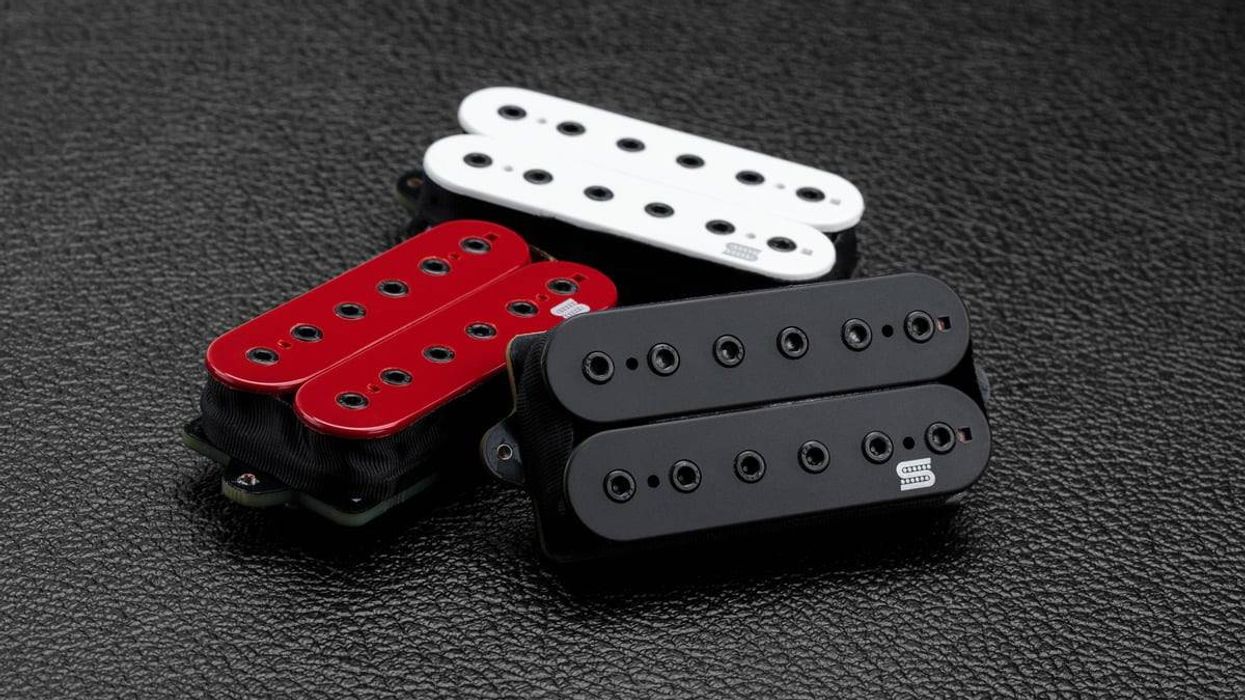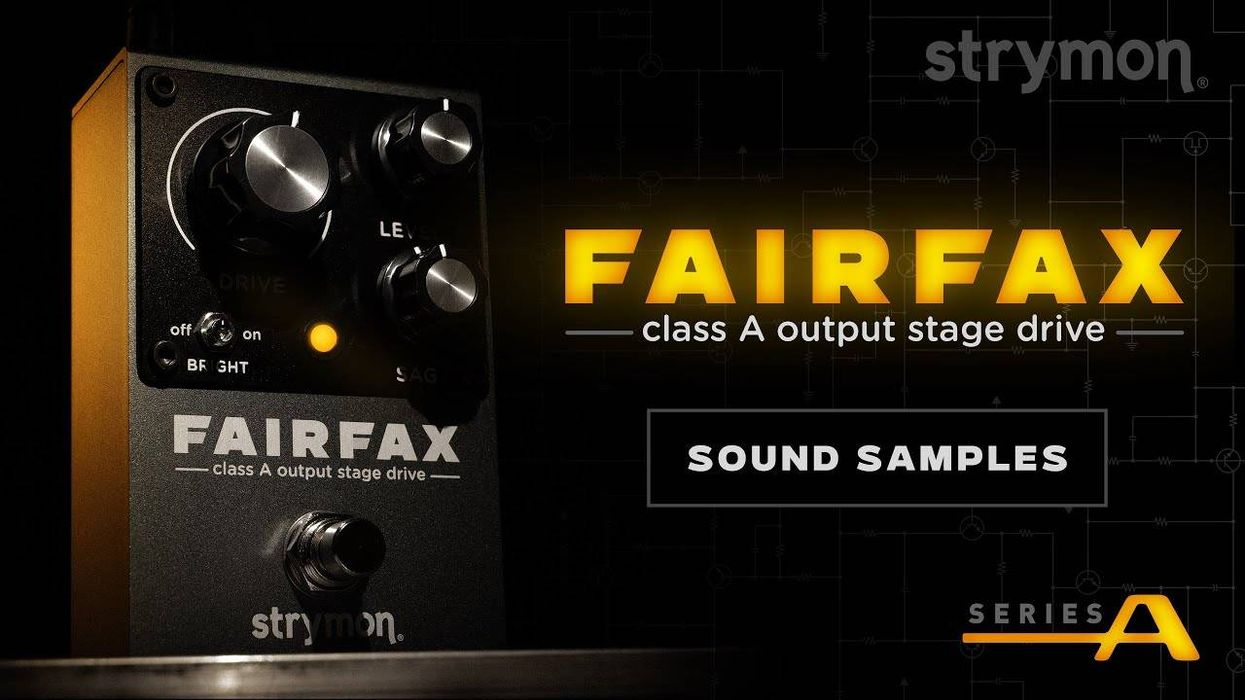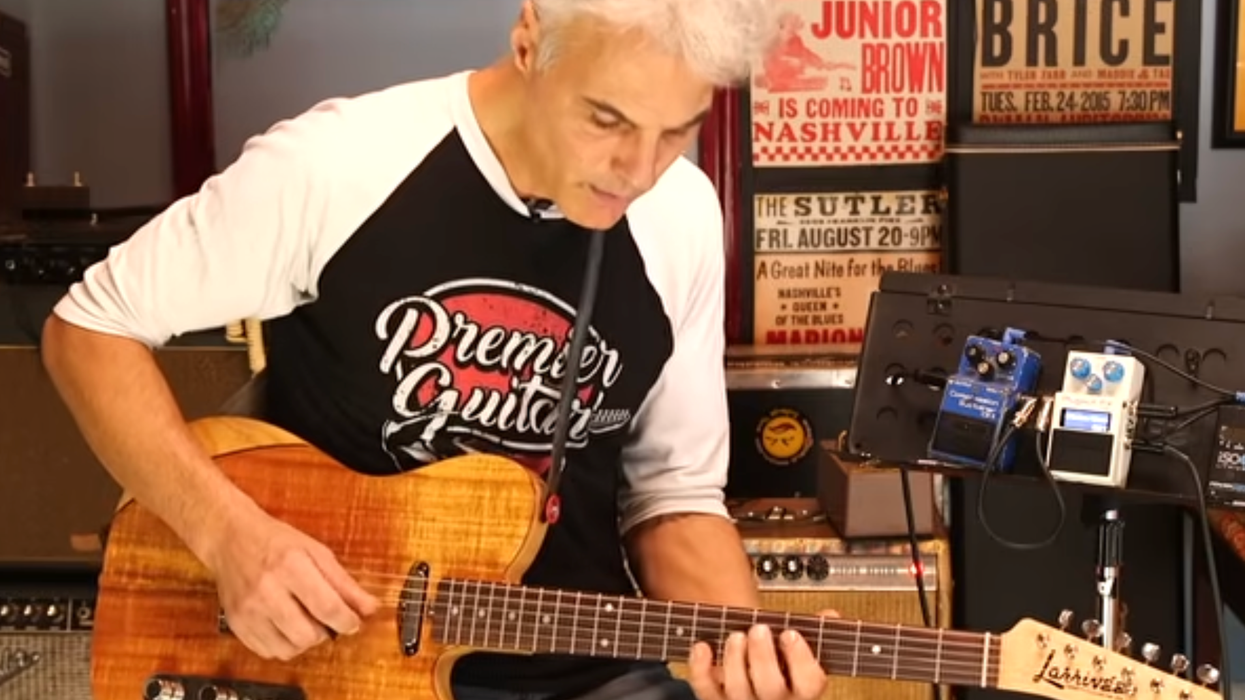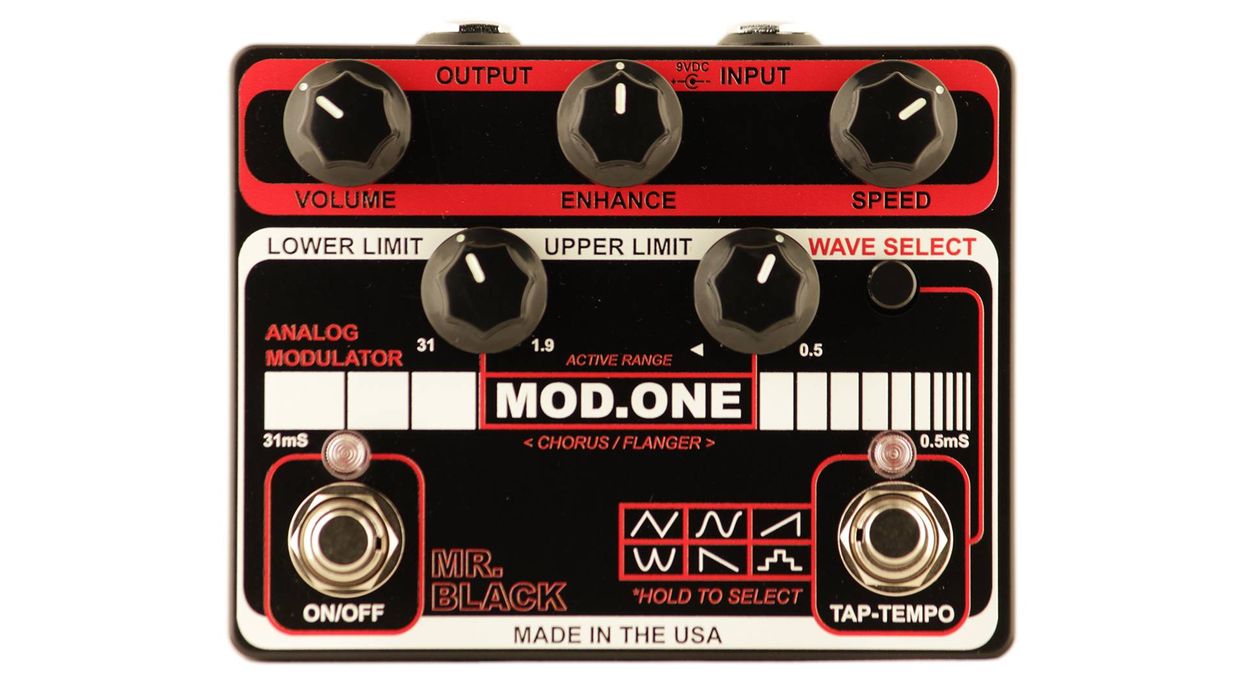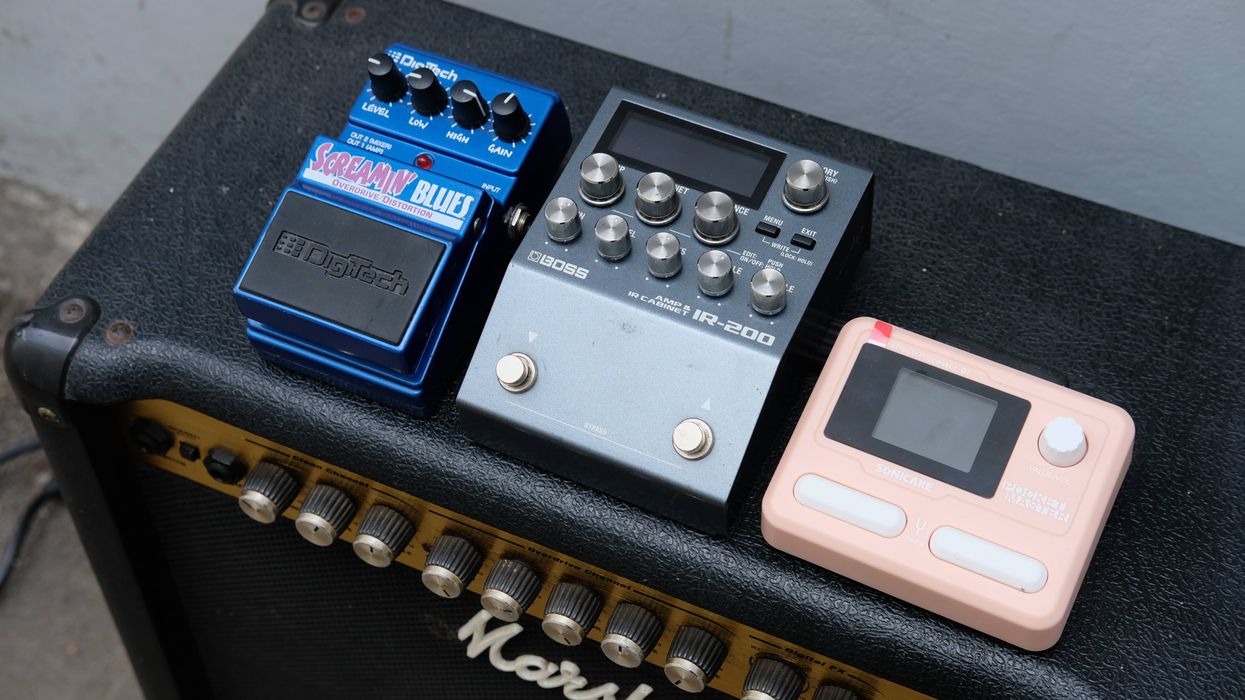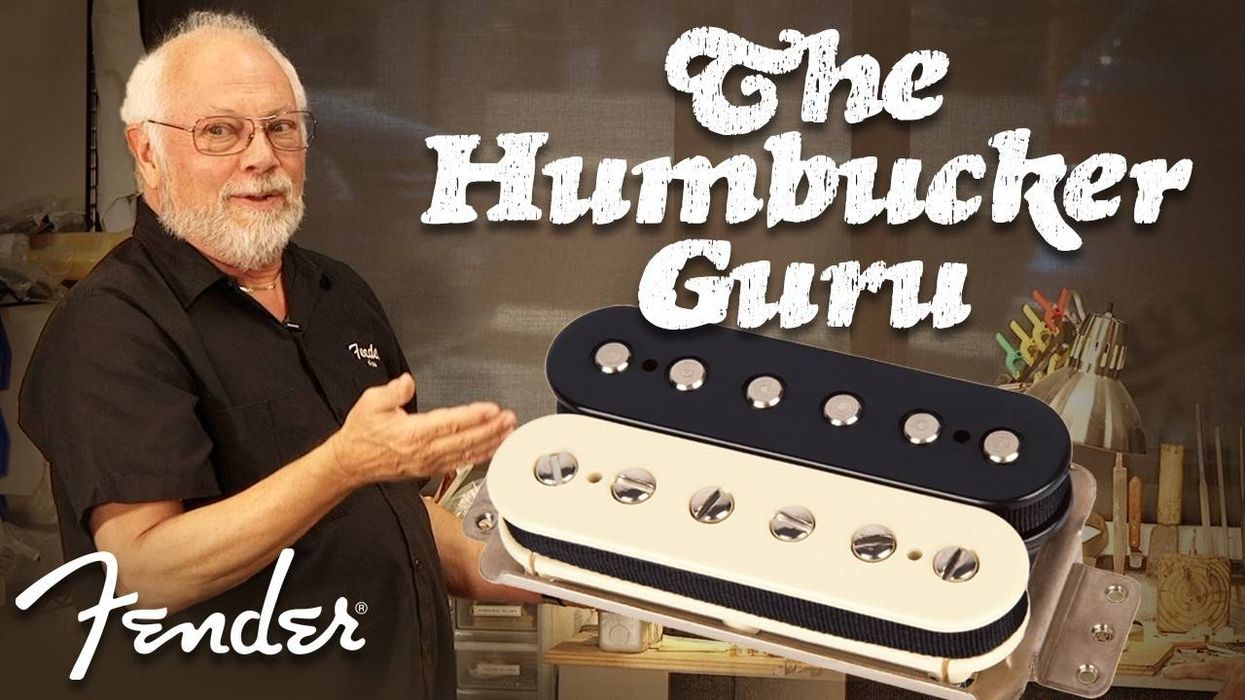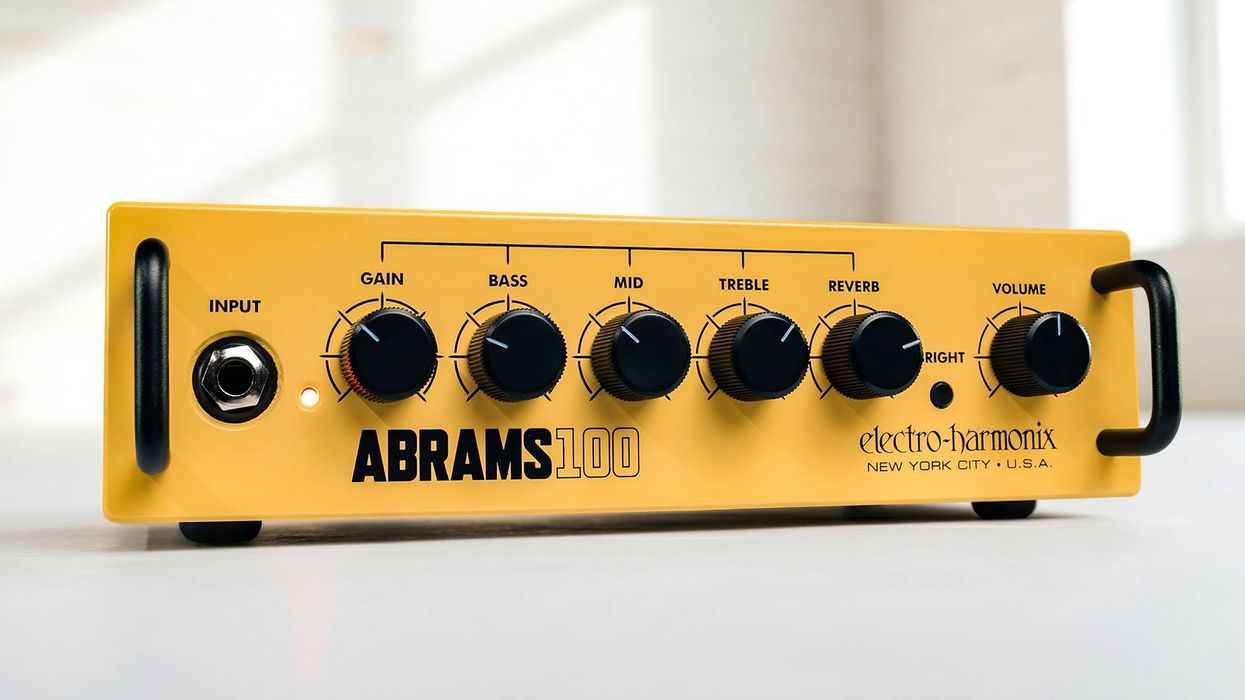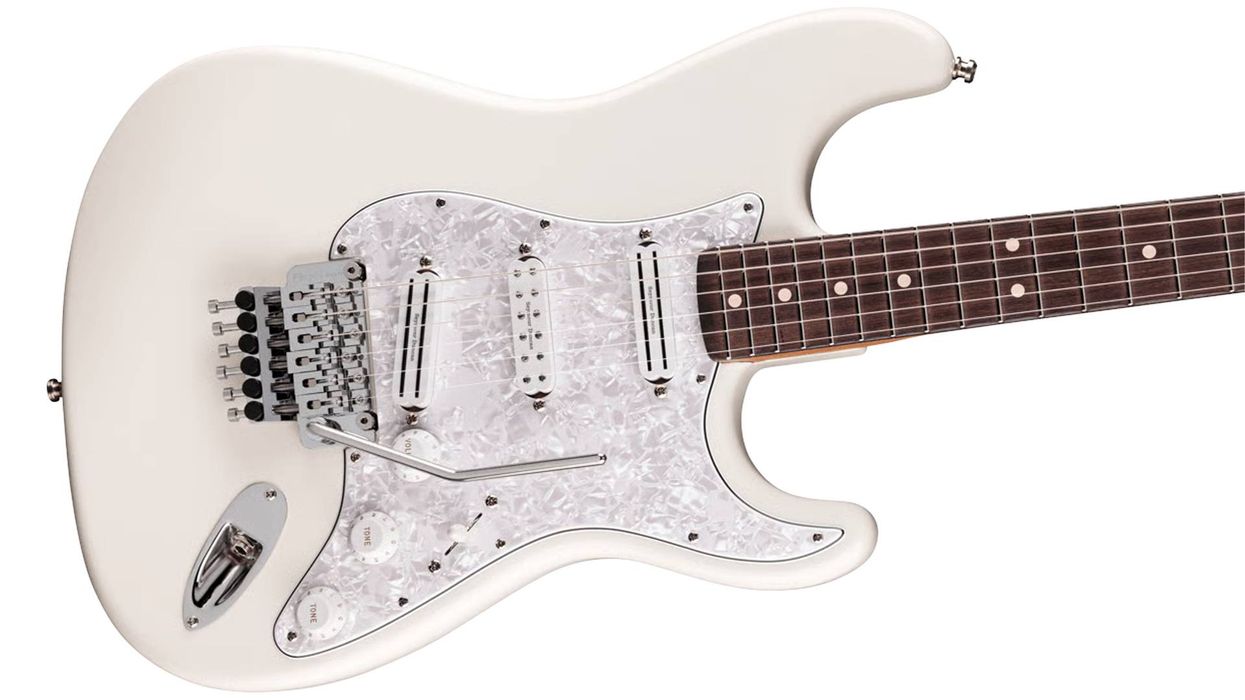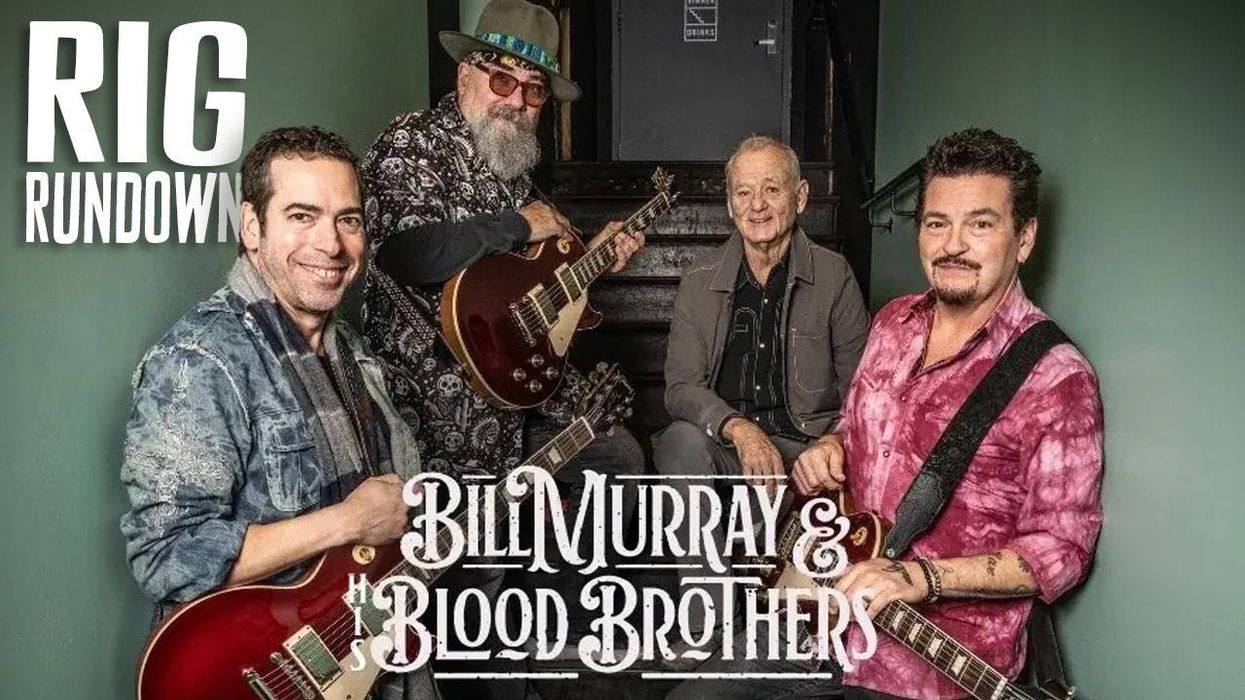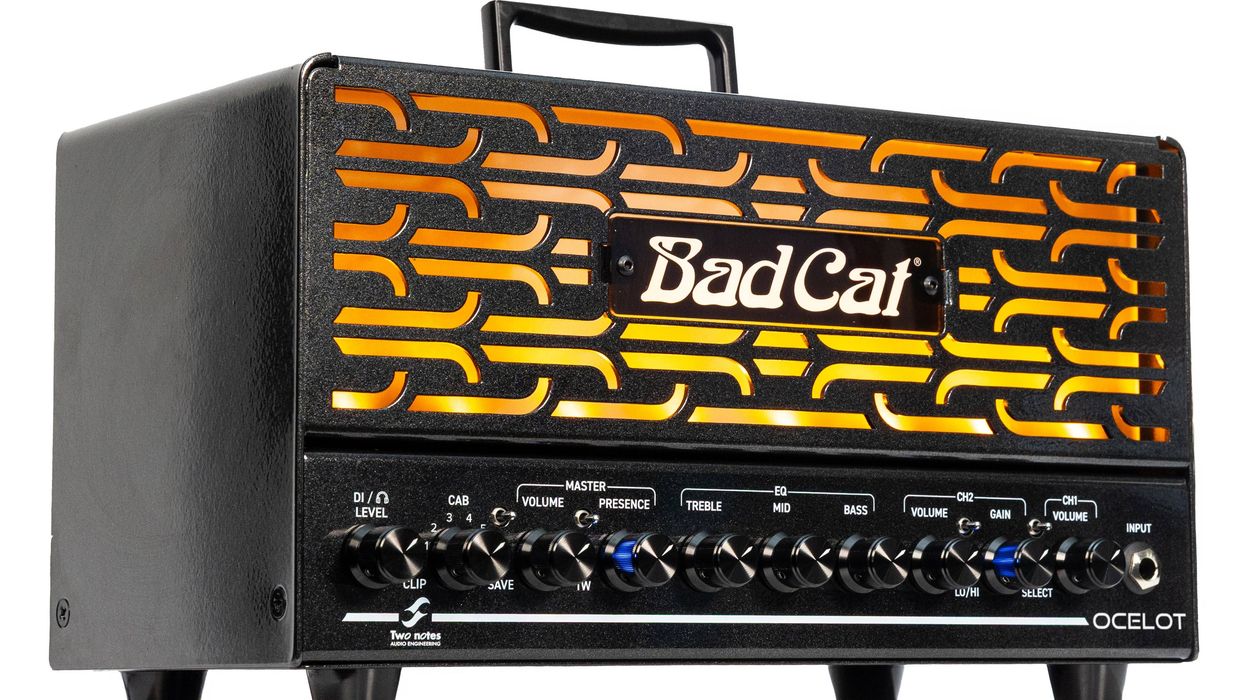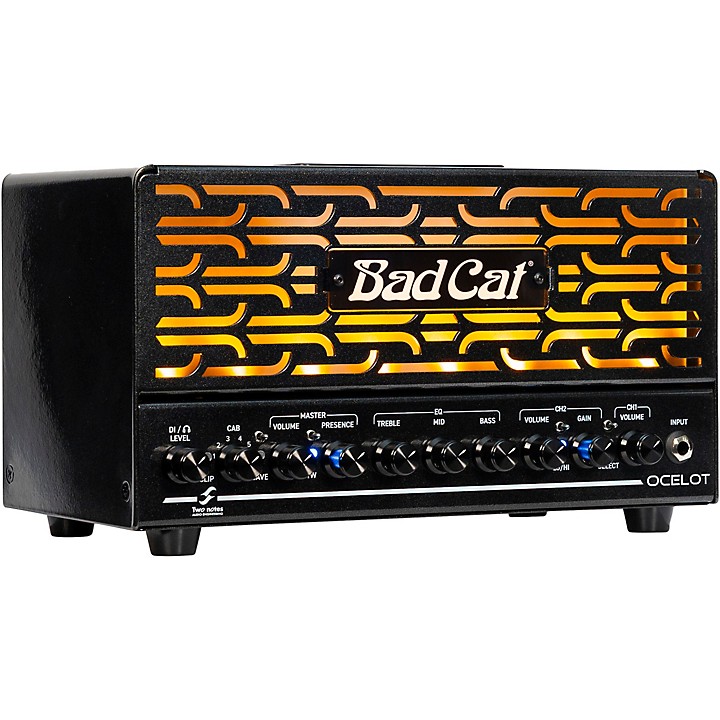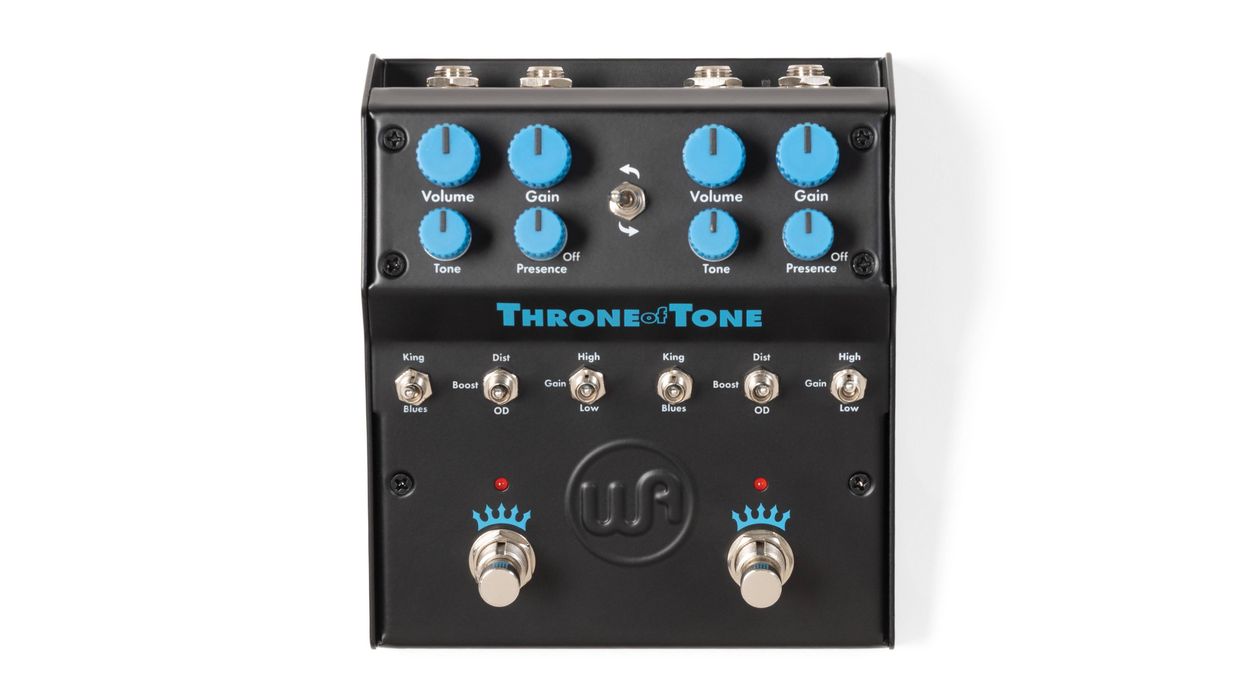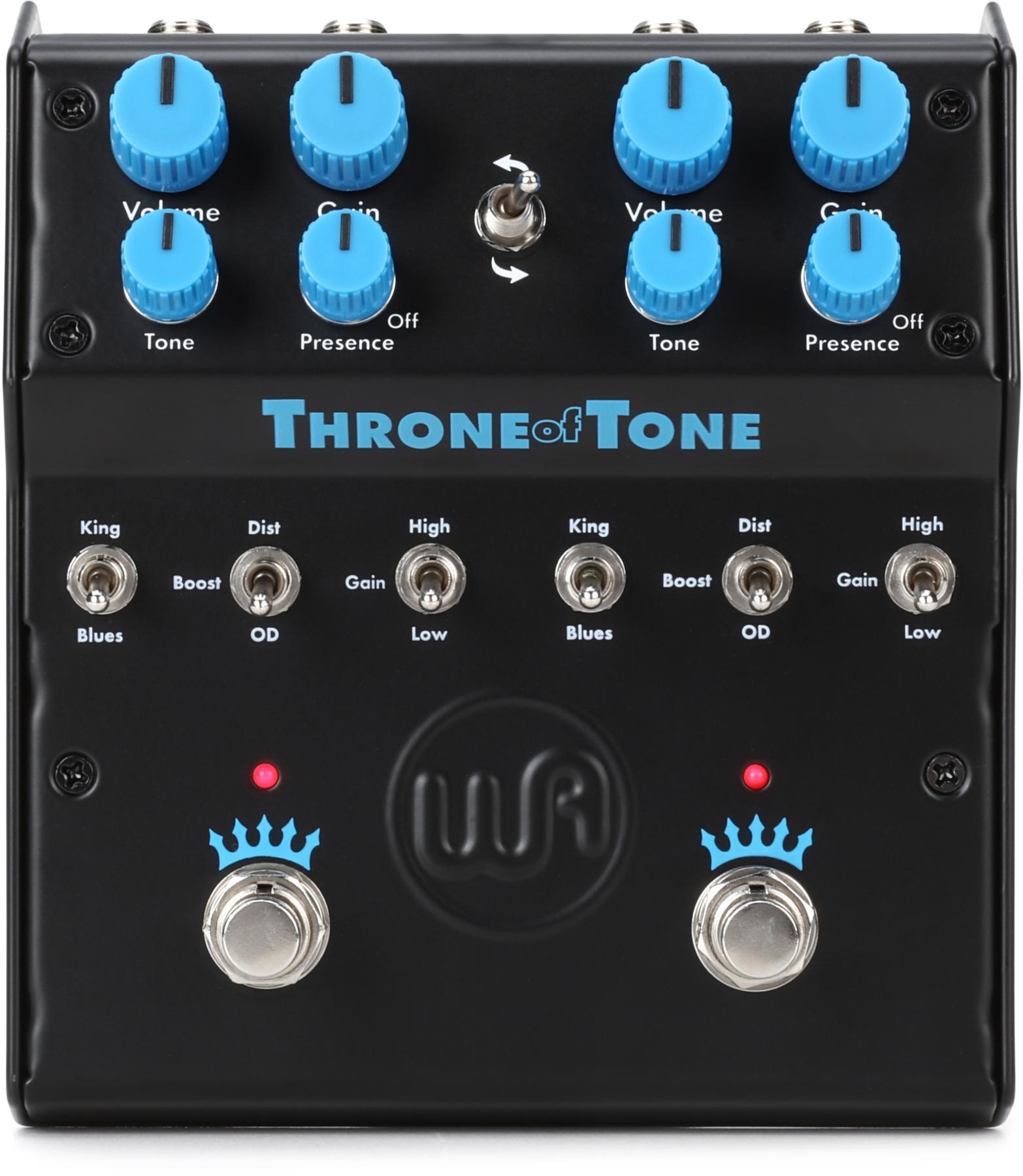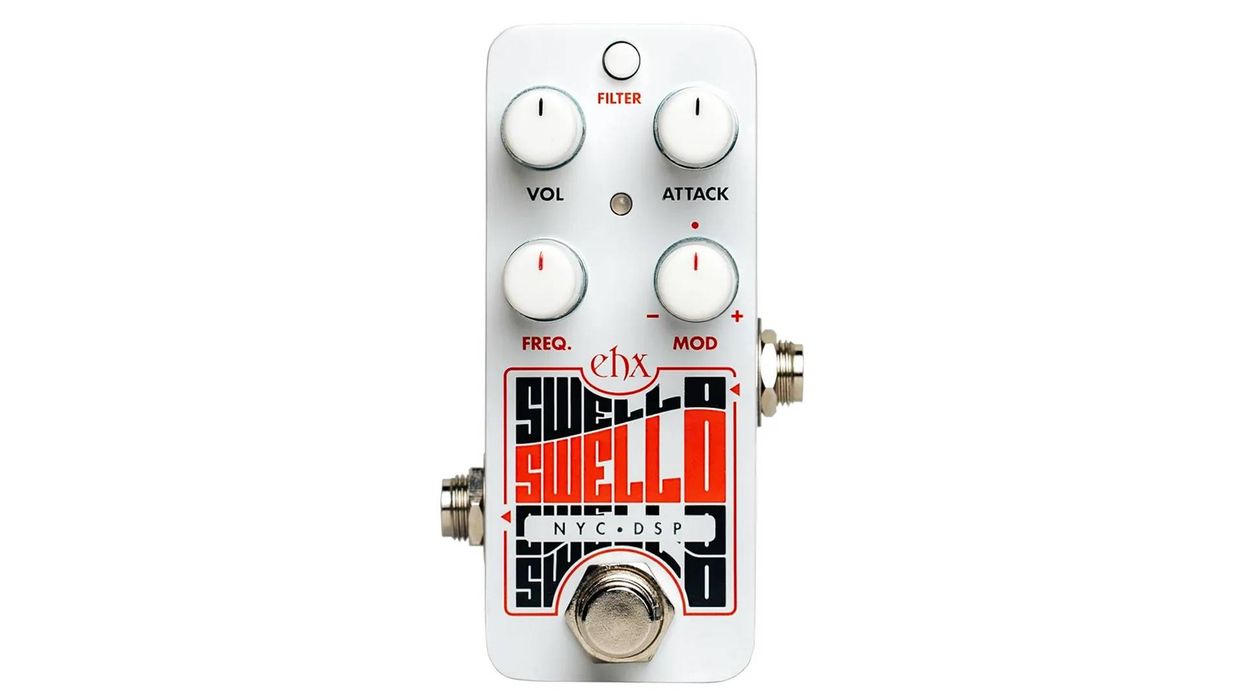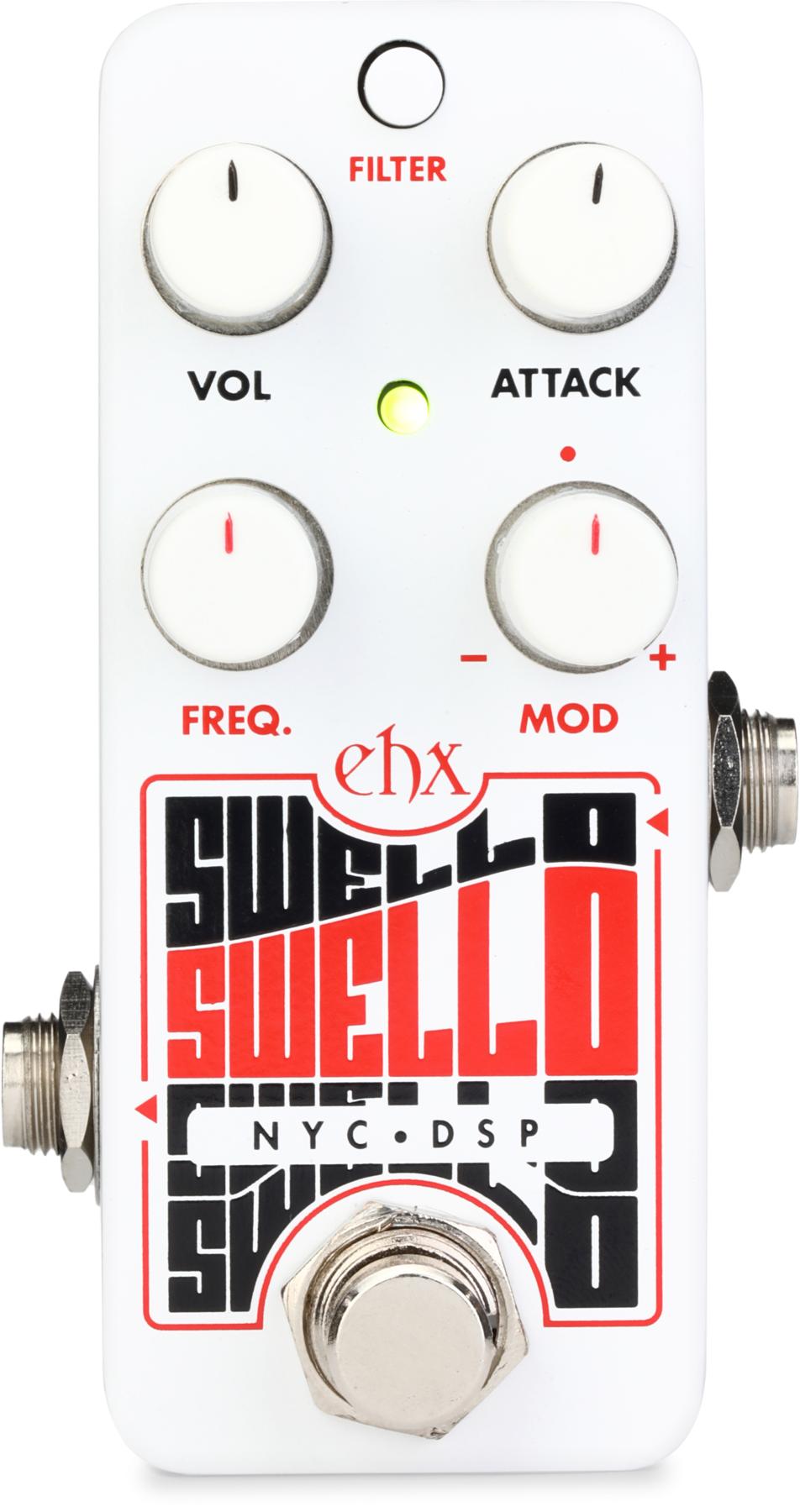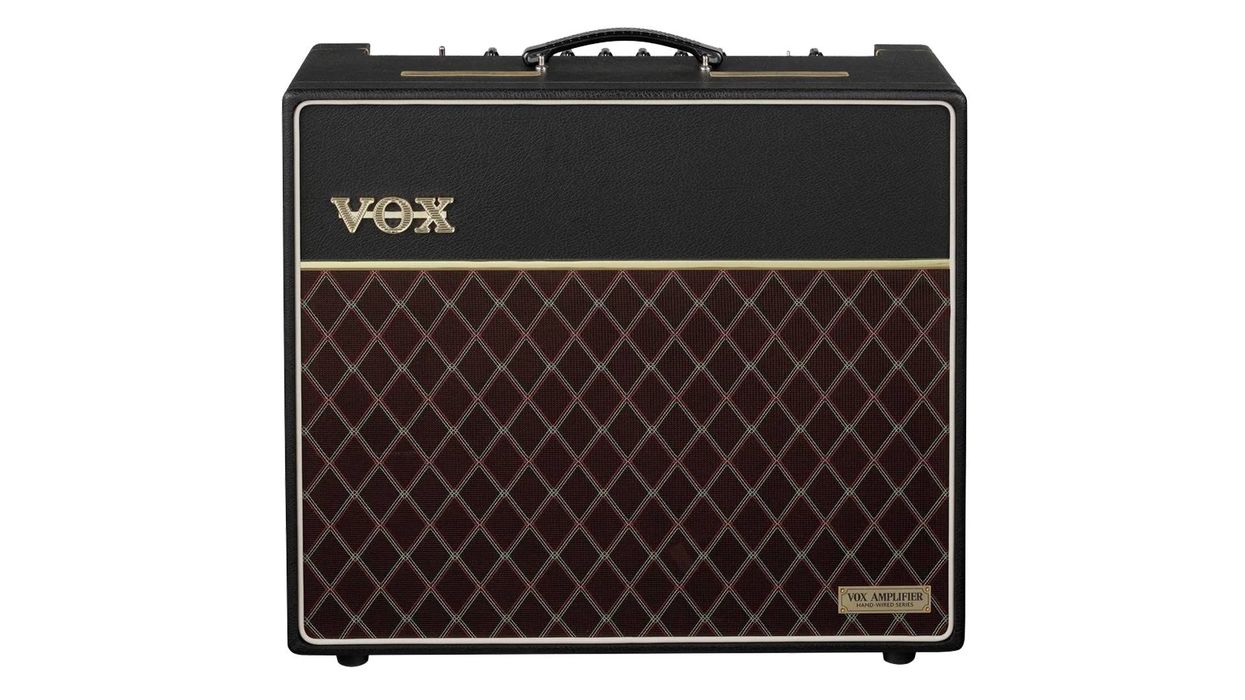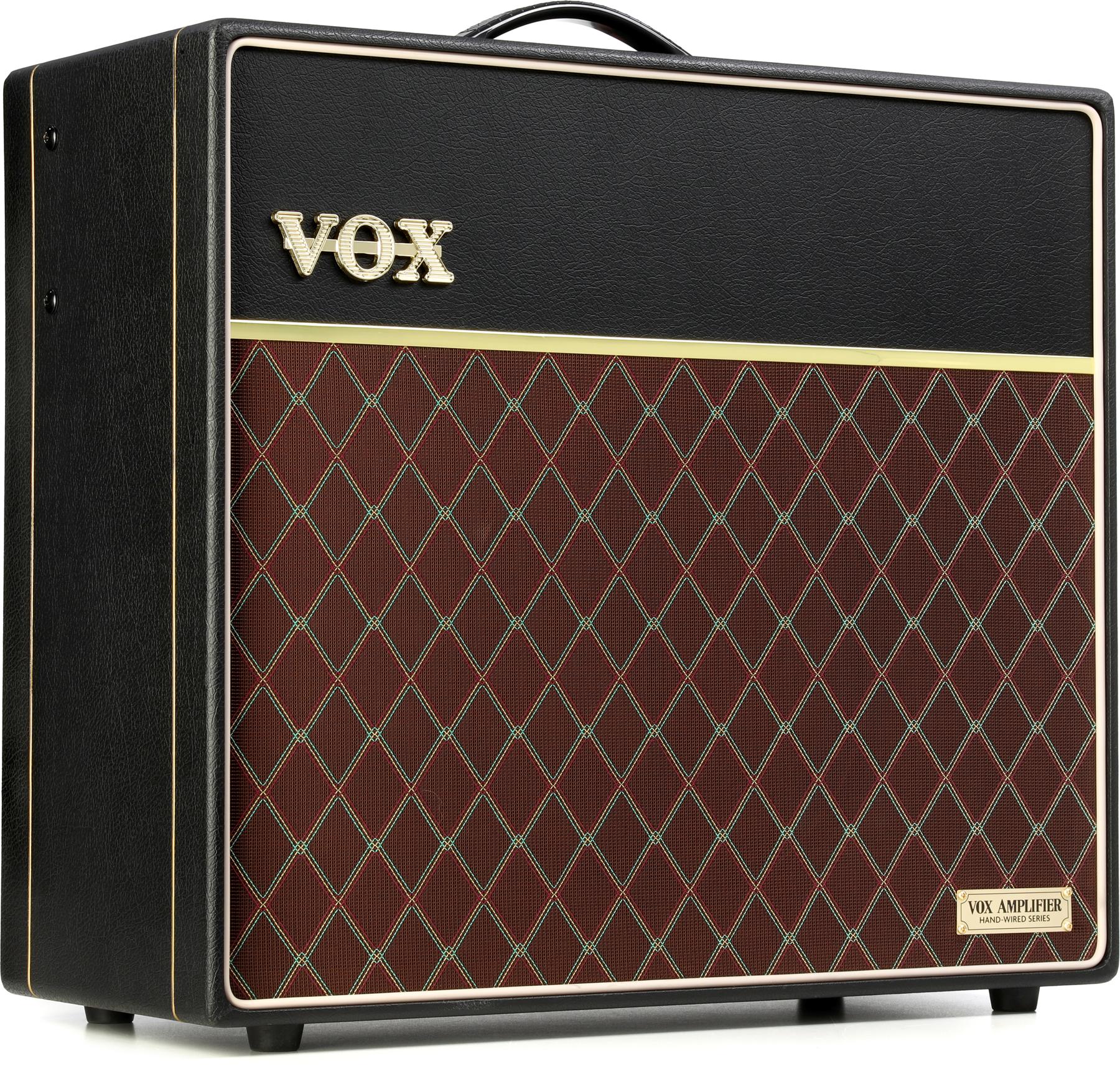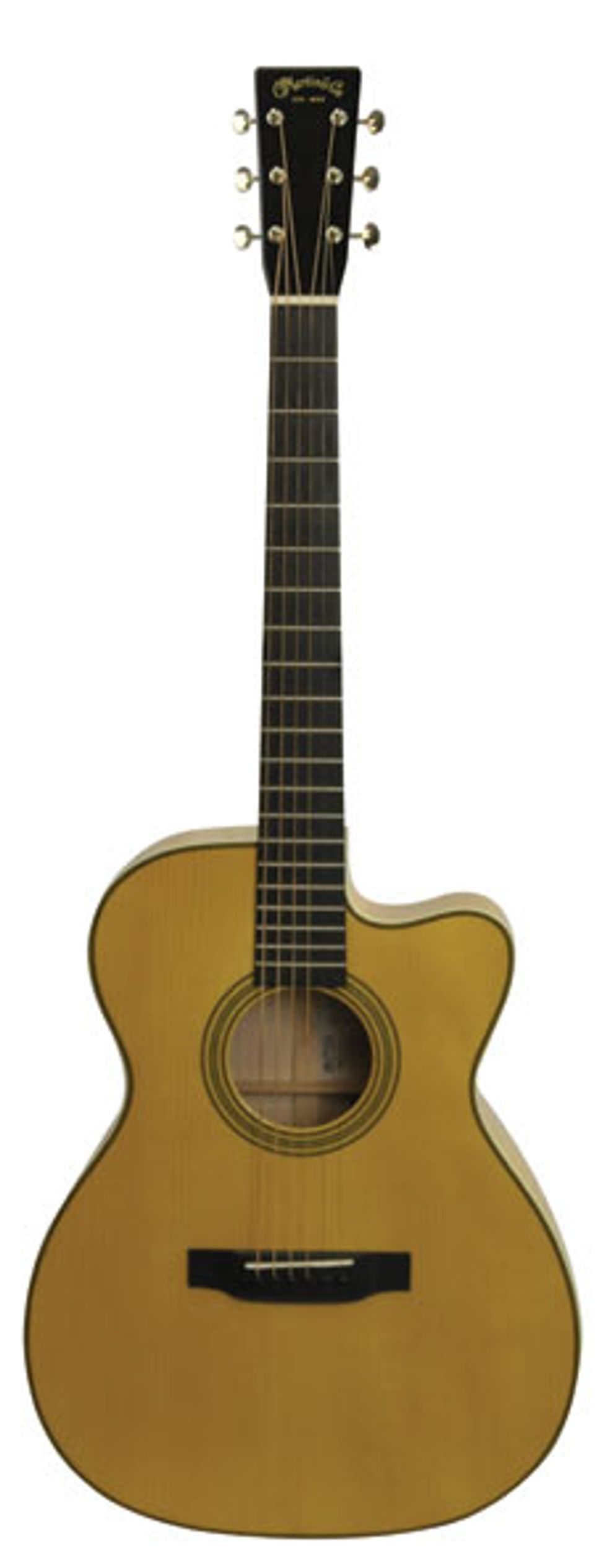 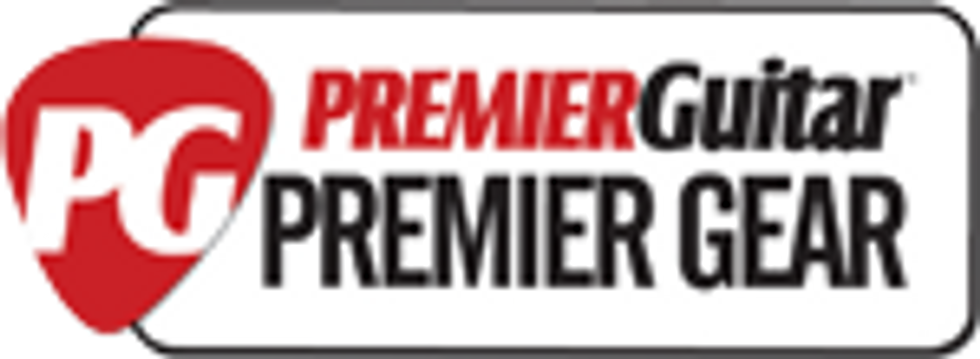 | |
| Download Example 1 Standard tuning, flatpicked | |
| Download Example 2 DADGAD, fingerstyle | |
| Download Example 3 DADGAD, capo V, flatpicked | |
| All clips recorded with an sE3 small diaphragm condenser mic, direct to RME Fireface into Samlitude V8 | |
Regular readers of my reviews may be aware of my near-obsession with the way guitars smell. Let’s face it, women smell better than men (okay, okay, we’re generally more sensitive to smells than men are). However you say it, it is almost always the first thing I notice about a guitar. I bring this up because the LJ Pro smells completely different than most guitars. It’s almost after-shavey, and not in an “Old Spice” way. There’s a gingery sweetness/sharpness that is soothing, intoxicating and energizing; in fact, that could be said for it’s tone as well.
I’m sure the smell of the guitar was the least of Laurence Juber’s intentions; in fact, in our wide ranging conversation about guitars, the smell of them never came up once. But we did talk about wood.
Adirondack Top
“When you go back to the ‘30s and earlier,” he explains, “you’re dealing with Brazilian rosewood, or mahogany, and you’re dealing with Adirondack spruce tops, so that’s the vintage sound, and that’s the sound that’s always appealed to me. The Adirondack top has significantly more of everything than Sitka spruce. Every piece of wood has a little different character, but typically, Adirondack gives you another octave of low end compared with Sitka. You just hear more bottom out of it, which isn’t to everybody’s taste, but I like having a lot of low end activity, especially if it’s controllable.” He continued, “It’s also got a little bit more of a megaphonic sound to it, which is again the kind of sound you associate with a vintage guitar. There’s just more presence in the sound.”
The Adirondack top has that rich, golden color that looks like sunshine captured in wood. The silky-smooth finish is the perfect accent, and the top almost feels warm to the touch even when it’s not. The blondness of the guitar is set off perfectly by the ebony fingerboard, bridge and headplate. The fingerboard is wonderfully naked and fingerstyle-friendly with 1 3/4" nut. The two-piece neck is Eastern hard maple, and smooth as a baby’s behind. The LJ Pro is outstandingly playable, and once you start, it’s nearly impossible to stop (in fact, the day it arrived at the PG offices, Editor in Chief Chris Burgess emailed begging me to come pick it up so he could get some work done).
Maple Back and Sides
I was very curious about Juber’s choice of maple for a guitar. Although it’s certainly not unheard of, maple acoustics are on the rare side. It’s hard to make a really great sounding maple acoustic, because many times the more brittle tendencies seem to overwhelm the tone. Juber said it was a string section that really got him thinking about it. “I was on a movie session some time ago, and I’m looking at the strings thinking, Okay, they’re all maple, maple necks, maple bodies with spruce tops and there has to be a reason for that. These are instruments that get played with a bow and the string tension is really high, but they have a lot of presence, a lot of focus in the sound. Some of those instruments are
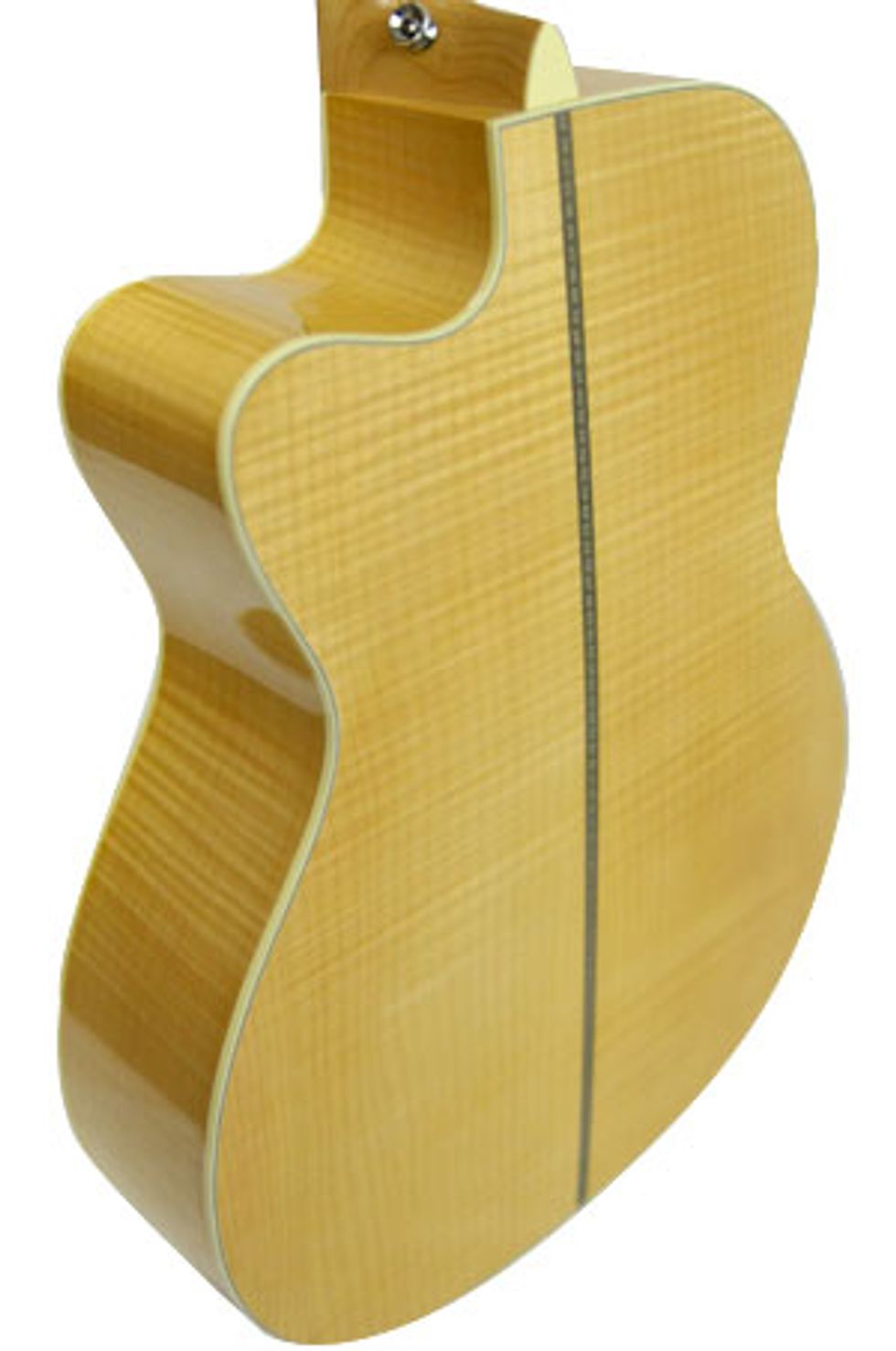 300 years old, they’ve been around for a long time. There must be a reason why maple is so valuable in that kind of instrument. So I thought, I know what an OM sounds like with an Adirondack top, let’s see what maple does.”
300 years old, they’ve been around for a long time. There must be a reason why maple is so valuable in that kind of instrument. So I thought, I know what an OM sounds like with an Adirondack top, let’s see what maple does.”
For the record, what maple does to this particular guitar is to give it incredible power, drive and sustain, with lean but warm bass and plenty of sparkle. You put your hands on it and it starts to sing, and gives up its tone effortlessly. I still haven’t found a way to overdrive it and make it sound fuzzy or distorted or in any way wrong.
Juber concurs; “I was very pleasantly surprised in the results. Maple has a lower velocity of sound; the wood itself doesn’t vibrate as much as mahogany or rosewood, so what’s happening is the sound is getting kicked straight out and you’re not dealing with this kind of undertone as it were, so all the character, the dynamic, and the articulations all speak more clearly with maple. From my point of view it’s something that’s really quite desirable. It doesn’t give you that bed, that area of frequency activity that you have to work to cut through. Using maple is almost like turning the bass control on a Fender amp down to 3, and turning the presence up a bit.”
String it Along
Juber likes some serious tension on that Adirondack top. “I re-string these guitars with GHS brand strings, my signature set, and I use .013, .017, .024, .032, .042, .056, so the top two and the bottom strings are meaty and then the others are light, so when I’m in DADGAD the tension is more like a regular medium set, and then when I’m in standard I have that extra meat. I like having the weight, I think that guitars just sound better with heavier strings, especially Adirondack tops; they really like it.”
Plug it In
“But what I didn’t realize was that it would make such a great stage guitar, too,” he continued, “because it’s light [at 3.5 pounds], because frequency-wise there’s less going on in the low end, and it amplifies really nicely. For the first time in the seven or eight years we’ve been doing my signature models, this is the first one that comes with a pickup and a strap button. We’re calling it the LJ Pro, because I think of it as something that’s really oriented to the professional player, to somebody who spends a lot of time on the stage.”
The pickup is the D-TAR Wavelength, which requires no modifications to the guitar other than a small hole in the saddle for the Wavelength to slip through. Juber wanted to capture the pure guitar sound. “There are no holes cut in the side, no knobs; it’s simply a pickup because I’m in favor of doing any sonic manipulation stuff outboard, not onboard. It’s not anything that can get in the way of the natural acoustic sound.” On stage, Juber pairs the Wavelength with an Audix microphone, and is a great believer in blending a pickup signal with a mic signal to really capture all the warmth and breathiness of the guitar.
Juber concludes, “I’ve found in 6 months of playing this prototype, there’s a burnished quality that comes into the sound. And if you play older maple guitars, whether it’s an old [Gibson] J200 or whether it’s an old [Gibson] L5, they really they have a wonderful, wonderful quality to them.”
Our Assessment
After spending a full week of evenings cuddling up with this guitar on the couch, my assessment is yowza. This guitar rocks. Or whispers. You can make it sing like an angel or bark like a dog. You can play fingerstyle, you can flatpick. It loves open tunings, but sounds awesome in standard (or “missionary tuning” to quote Laurence Juber). Blues, jazz, folk, jigs and reels, fingerstyle madness or strummy songs, it’s right there.
Lucky for me (and you, reader-friend), master luthier Tom Ribbecke [Ribbecke Halfling Pin Bridge review, Oct. 2008] happened to be passing through town while I was reviewing the LJ Pro, so I was able put it in his hands for a couple minutes one morning. “This is a remarkable guitar,” he said, playing some cool jazz riffs and grinning the Ribbecke grin. He, too, was very impressed with the tone and bass response, and slipping a finger inside the soundhole, stated that the X-brace was much wider than was conventional.
It’s beautifully made, and very simple. I love the wide fretboard, clear of any ornamentation, and the simple herringbone binding and rosette, giving the guitar a real vintage vibe. The glossy finish is velvety smooth, and it plays and feels great. The tuners are the vintage-style open-back mini-tuners, which I am not partial to. I do a lot of shifting between tunings, so I like a bigger, more fluid-feeling tuner—but that’s just a preference and not a knock on the guitar.
I played it a whole week before I even remembered to plug it in. I once had a Wavelength pickup in one of my Indian rosewood guitars, and I remember it was a lovely dark sound, very lush and sort of “glossy.” I was curious about what that darkness would do with this brilliant sounding guitar. The bass response is quite remarkable, but not surprisingly it’s very clear and crisp. The Wavelength pickups are seriously hot, so there was headroom to burn, and it was very well balanced and clean. Nothing unexpected here, simply a terrific pickup in a terrific guitar.
The Final Mojo
All of the Juber-model Martins that I have seen or played have been wonderful guitars, and this one is wonderful-plus. I love the size, the shape, the feel, the tone, the smell, the simplicity and the vibe of this sunshine-yellow guitar. It’s a powerhouse, and a completely professional guitar that will do anything and everything a fingerstylist could want, plus it handles flatpicking chores flawlessly. You won’t go wrong with this one in the arsenal.
Buy if...
you are looking for a fingerstyle-leaning yet multi-purpose, completely professional, workhorse/powerhouse axe.
Skip if...
flatpicking is your main gig, or you like a narrower fingerboard.
Rating...
List $5499 - C. F. Martin Guitar Co. - martinguitar.com |
